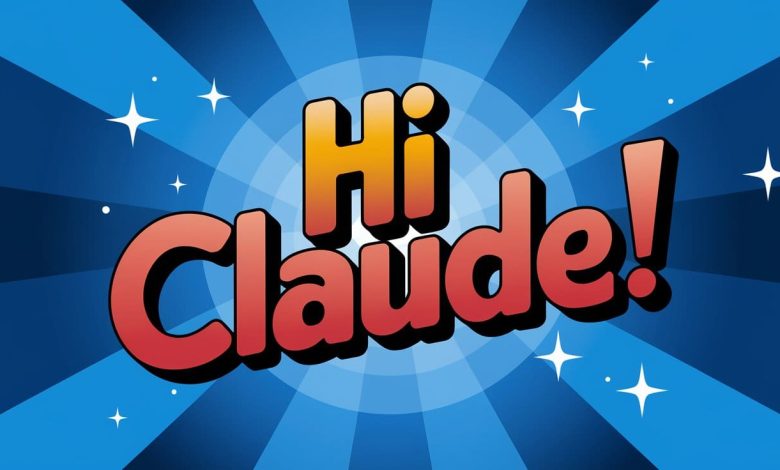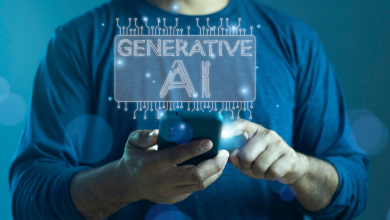Claude AI: Unboxing Anthropic’s LLM-based AI Assistant, Artifacts & Use Cases


Image by Editor | Ideogram
Claude AI (or simply Claude) is a revolutionary AI assistant, developed by Anthropic. It has gained popularity in the last few months upon the release of its latest version, providing advanced and attractive AI capabilities worth diving into. This article introduces Claude and its most notable features, placing the focus on discussing two key elements:
- Claude artifacts, a novel and distinctive mechanism to make the most of content used in user-AI conversational flows
- Use cases where Claude stands out for addressing practical and business-oriented problems
Introducing Claude AI
Upon registering in Claude, the system introduces itself as “a next-generation AI assistant built for work and trained to be safe, accurate, and secure.” This first contact makes clear the tool’s emphasis on placing ethics and safety at center stage, being part of its value proposition against its competitors.
As of the time of writing, the default version of Claude, launched in June 2024, is Claude 3.5 Sonnet, which is a balanced combination between their most efficient and lightweight model, Haiku, and the most powerful one, Opus. Besides having both a free and paid tier, Sonnet can be used in the iOS Claude App and is integrated into Amazon’s AWS Bedrock as well as Google’s GCP Vertex AI. The free version of Sonnet differs from the paid version in the maximum number of chat messages allowed per fraction of a day.


Claude 3.5 Sonnet and its “sibling” models | Image source: claude.ai
Some of the most salient capabilities of Claude AI concerning other LLM-based conversational AI tools, include:
- Advanced visual reasoning: Claude AI enables sophisticated reasoning and conclusion drawing upon visual assets like charts, graphs, and diagrams.
- Artifacts: designed to make the user experience and interactions with the AI more flexible, artifacts are one of the most notable and distinctive features in the latest Claude release. Keep reading below to discover more about this intriguing feature in the below section.
- Safety and ethics: a strong focus on avoiding harm and respecting individual privacy while encouraging fact-checking and balanced perspectives on complex or controversial-themed conversations.
Claude AI Artifacts
Artifacts are created by Claude, not by us as users. Here’s how it works: if a user requests Claude the creation of standalone content beyond just responses in the conversation — such as code snippets, a full document, or visual content — the generated content pops out in a separate area from the main conversation window. Thus, that self-contained content becomes a reusable artifact. The decision to turn a response into an artifact lies in Claude, depending on the content requested and the conversation context.
One major purpose of artifacts, therefore, is to easily view, edit, or reuse pieces of generated content for modifying them anytime, using them as analysis assets, and so on. But the story does not end there: artifacts are intended to boost collaborative workflows around a centralized resource space. This collaboration premise is one of Anthropic’s future missions, as stated on their site.
Let’s see an example conversation for a marketing-branding use case where a visual artifact is built:


Creating a visual logo design with Claude AI
This example conversation prompts for a logo design based on text specifications. Claude not only generates the visual in scalable vector graphics (SVG) format along with its associated code: but it goes two steps beyond, by automatically turning the generated content into an artifact -placed on the right-hand side window- and providing plenty of detail about the created logo in the main conversational flow -place on the left-hand side window.
Let’s see what happens if we ask for a slightly more ambitious refinement of the logo. Here is the new prompt:
Could we refine the created “gakudō” icon by adding some color to it?
For instance, wooden-like color or textures in the background, as well as turning the curved arrow into a zigzagging path from bottom to top?
And the result becomes a new, separate artifact.


Refined visual artifact
Whilst beautiful and simplistic, at this point it is worth setting realistic expectations and being aware of the capabilities and limitations of the AI behind Claude. This is primarily an LLM-based solution, hence it specializes in generating language-based content: not exclusively natural language, but also code, as illustrated in the above SVG generation example. This means it may not be effective in showing complex visual patterns like “wooden textures”, as asked in the last prompt. The capabilities and limitations of the generated SVG code itself are what set the capabilities and limitations of Claude to address our request. This said, nice logo, anyway!
Salient Use Cases
We finalize by illustrating a few business-oriented use cases where the different capabilities of Claude AI can be leveraged:
- Advanced reasoning in finance: Financial analysts can leverage Claude’s reasoning capabilities to analyze complex market trends and economic indicators upon company and market data to generate adequate and detailed investment strategies based on multiple factors and under diverse scenarios.
- Vision analysis in retail: Physical store layouts and in-store customer behavior can be analyzed by Claude to identify popular product locations within the store and suggest optimized layouts that impact customer experience and revenue.
- Code generation for business appraisal: Through collaboration between business and software development teams, code-based dashboards -e.g. based on React- can be built as artifacts, analyzed, or reformulated to monitor aspects like key performance indicators (KPIs) in different departments.


A KPI dashboard as a Claude artifact


The associated React code of a KPI dashboard generated as an artifact
- Multilingual processing in e-commerce: a global e-commerce firm can exploit Claude’s multilingual processing capabilities for automatically translating product descriptions, customer reviews, and documentation resources into several languages at once and consistently, thereby enhancing customer experience across regions.
Wrapping Up
Claude AI is being positioned as a flexible and promising conversational AI solution for supporting a wide range of applications and problem-solving scenarios. With a strong emphasis on safety and ethics, its innovative artifacts that help manage generated content effectively, and capabilities like advanced analytical reasoning, Claude could become the next addition to your fleet of AI tools if you give it a try.
Iván Palomares Carrascosa is a leader, writer, speaker, and adviser in AI, machine learning, deep learning & LLMs. He trains and guides others in harnessing AI in the real world.



